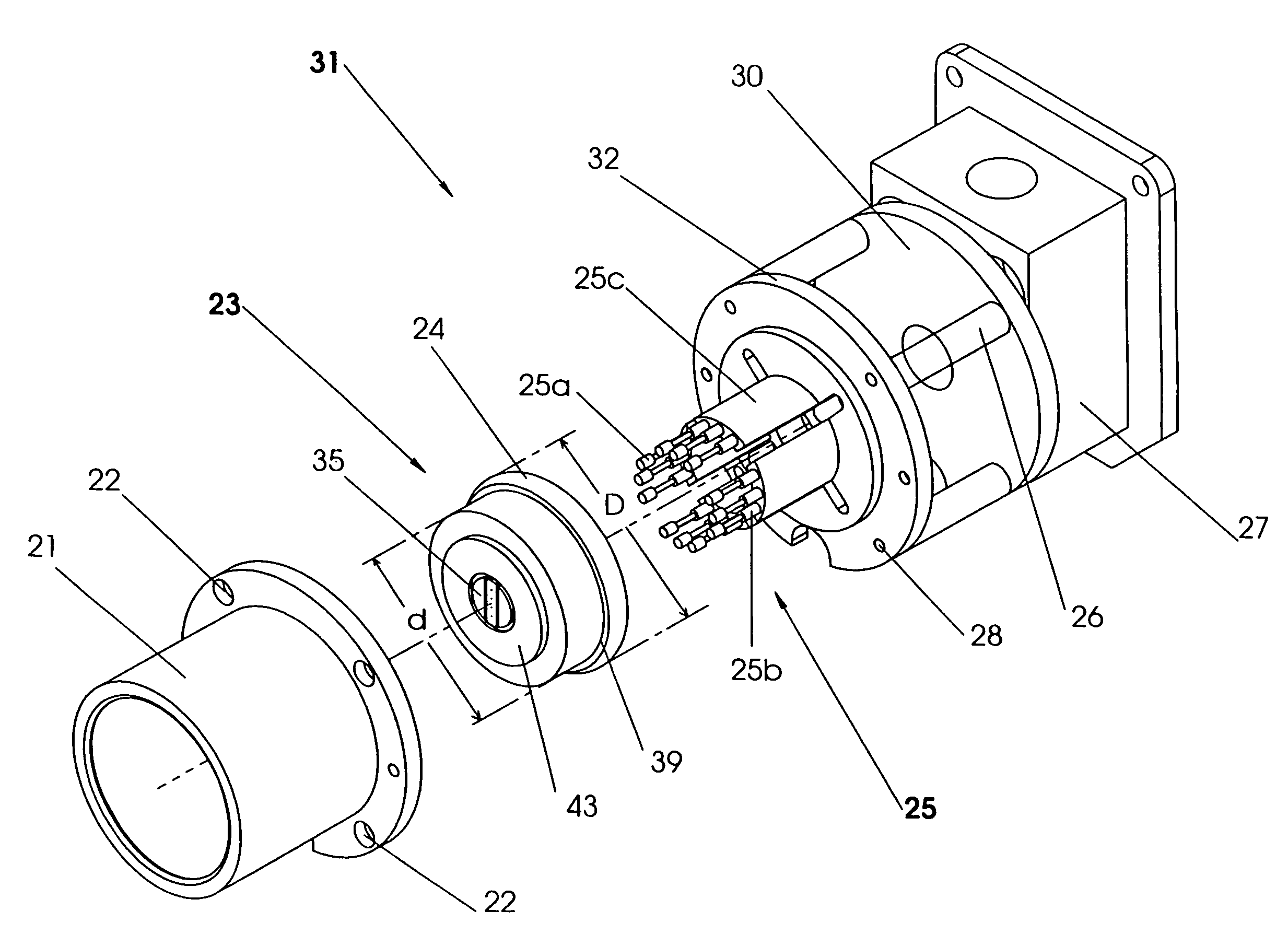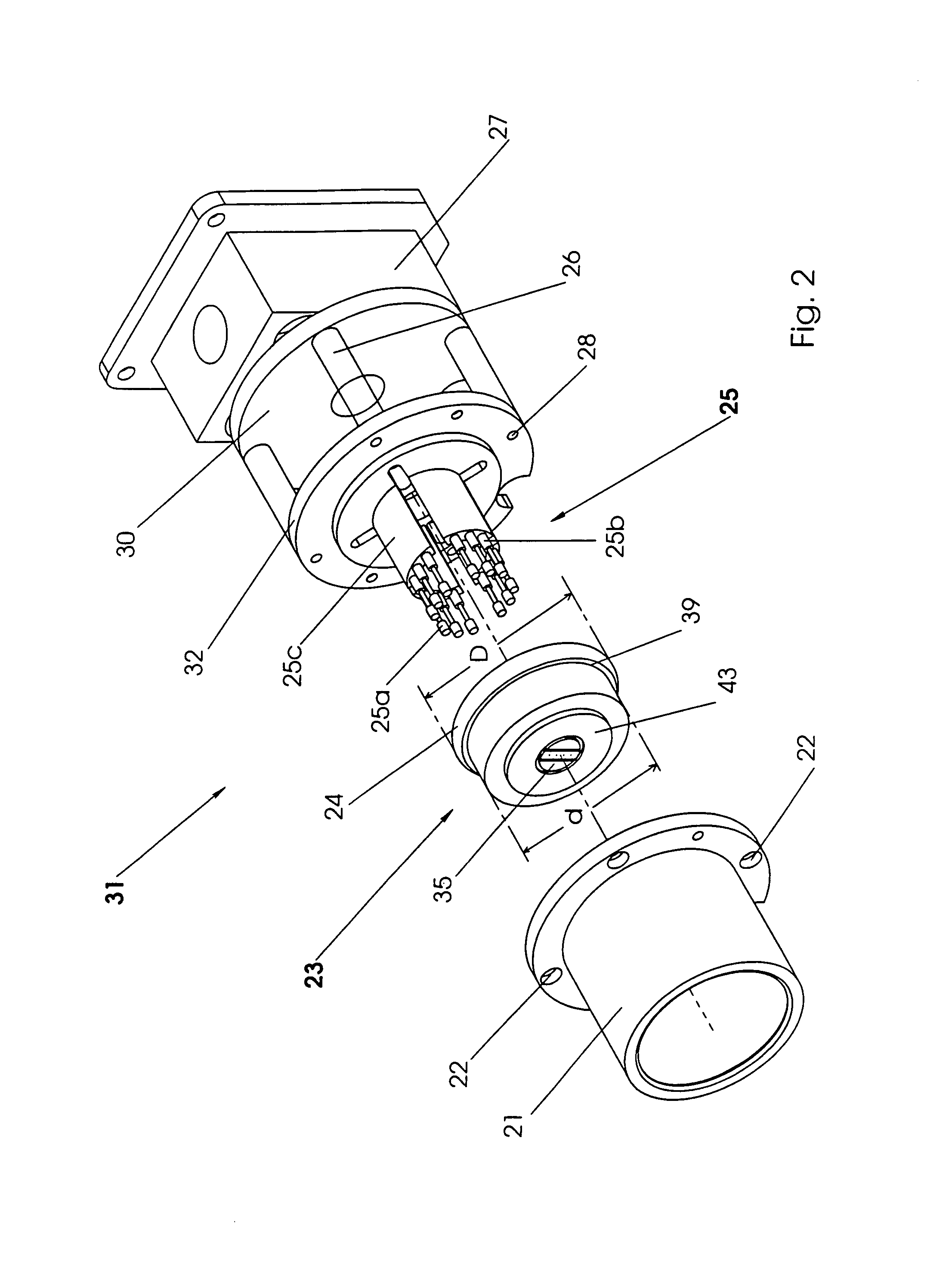Automatic mercury probe for use with a semiconductor wafer
a technology of mercury probes and semiconductor wafers, applied in electrical testing, measurement devices, instruments, etc., can solve problems such as unrepeatable probe measurements to an ultra-shallow layer
- Summary
- Abstract
- Description
- Claims
- Application Information
AI Technical Summary
Benefits of technology
Problems solved by technology
Method used
Image
Examples
Embodiment Construction
[0034]As will be seen from the following discussion, the multi-point probe of the present invention, illustrated in the following discussion as a four-point probe, utilizes mercury, which is electrically conductive, drawn up through four small diameter tubes and passages in a probe head by means of a vacuum as mercury probes for testing a semiconductor wafer. Additionally, it will become clear to one skilled in the art that an extremely small diameter mercury contact provides a small diameter electrically conductive probe of the surface of the wafer to minimizing probe penetration of the wafer, mechanically and electrically, in order to minimize disturbance to the ultra-shallow implanted layer on the wafer for more accurate sheet resistivity measurements.
[0035]FIG. 1 is an exploded perspective view of the mercury four-point probe system of the present invention minus electrical cabling, and vacuum components and tubing. This has been done to make the mechanical structure of the pres...
PUM
 Login to View More
Login to View More Abstract
Description
Claims
Application Information
 Login to View More
Login to View More - R&D
- Intellectual Property
- Life Sciences
- Materials
- Tech Scout
- Unparalleled Data Quality
- Higher Quality Content
- 60% Fewer Hallucinations
Browse by: Latest US Patents, China's latest patents, Technical Efficacy Thesaurus, Application Domain, Technology Topic, Popular Technical Reports.
© 2025 PatSnap. All rights reserved.Legal|Privacy policy|Modern Slavery Act Transparency Statement|Sitemap|About US| Contact US: help@patsnap.com



